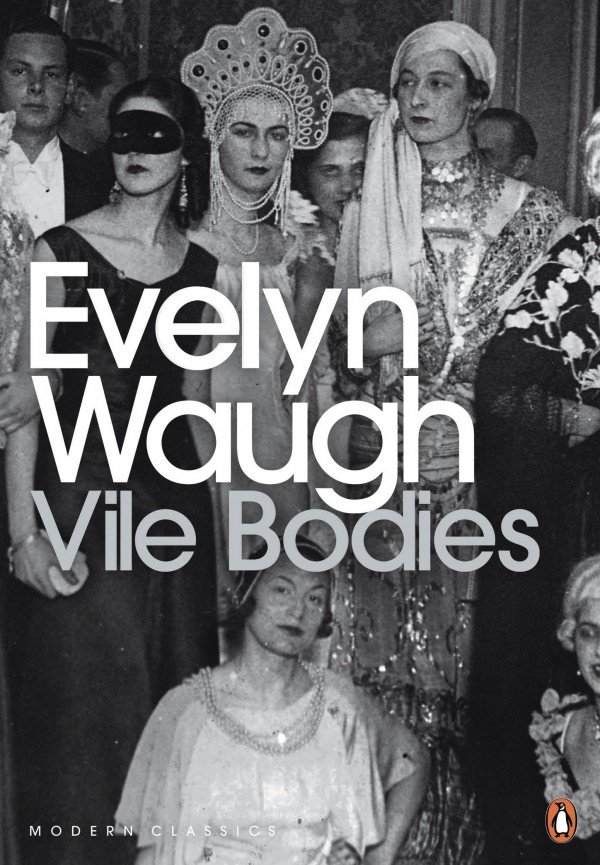 Vile Bodies by Evelyn Waugh (1930). This careening novel follows a group of shallow, well-off Brits to motor races and antic parties. Joining in on the Bright Young Things’ mad doings are a writer named Adam Fenwick-Symes and his on-again, off-again fiancée. War looms, but Waugh’s style—dry and bubbly as the novel’s flowing champagne—keeps us laughing, even as characters descend into madness or head for the battlefield.
Vile Bodies by Evelyn Waugh (1930). This careening novel follows a group of shallow, well-off Brits to motor races and antic parties. Joining in on the Bright Young Things’ mad doings are a writer named Adam Fenwick-Symes and his on-again, off-again fiancée. War looms, but Waugh’s style—dry and bubbly as the novel’s flowing champagne—keeps us laughing, even as characters descend into madness or head for the battlefield.
The List of Books
We awarded points for each selection – 10 points for a first place pick, nine points for a second place pick, and so on. Then we totaled up all the points and ranked them accordingly. Here are all the books ordered by the number of points each earned. In the parentheses are the initials of the authors that selected them and the points earned. Click on their initials to see their list.
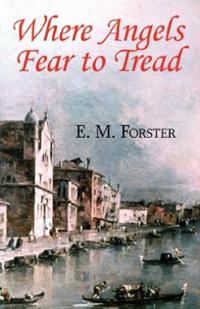 Where Angels Fear to Tread by E. M. Forster (1905). “For fools rush in where angels fear to tread,” wrote Alexander Pope. That quote informs this biting tale that begins when a rich young widow, Lilia Herriton, travels to Italy. There she meets and marries a penniless Italian and dies in childbirth. Her relatives rush to retrieve the infant and give him a “proper” English upbringing. But his father objects in this first novel that signals Forster’s lifelong interest in cultural collisions and British hubris.
Where Angels Fear to Tread by E. M. Forster (1905). “For fools rush in where angels fear to tread,” wrote Alexander Pope. That quote informs this biting tale that begins when a rich young widow, Lilia Herriton, travels to Italy. There she meets and marries a penniless Italian and dies in childbirth. Her relatives rush to retrieve the infant and give him a “proper” English upbringing. But his father objects in this first novel that signals Forster’s lifelong interest in cultural collisions and British hubris.
Total Points: 4 (ES 4)
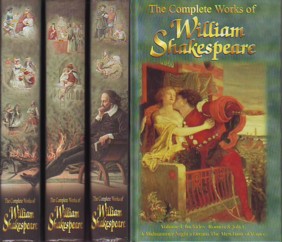 Works of William Shakespeare (1564–1616). In a writing career of only two decades, from 1590 to 1610, Shakespeare produced the most influential canon of dramatic literature in history. His early romantic comedies (A Midsummer Night’s Dream), his darker mature comedies (Measure for Measure), his history-shaping history plays (Henry IV, Parts I and II, and Henry V), the great core tragedies (Hamlet, Macbeth, Othello, and King Lear), the late Roman plays (Antony and Cleopatra), and the final romances (The Tempest) are enduring monuments to an unparalleled genius. He was also a great poet. His 154 sonnets have shaped the efforts of every true poet thereafter. Indeed, Shakespeare’s two nondramatic poems—the Ovidian erotic poem Venus and Adonis of 1593 and its darkly brilliant sequel The Rape of Lucrece of 1594—were blockbusters that launched the young writer’s brilliant career.
Works of William Shakespeare (1564–1616). In a writing career of only two decades, from 1590 to 1610, Shakespeare produced the most influential canon of dramatic literature in history. His early romantic comedies (A Midsummer Night’s Dream), his darker mature comedies (Measure for Measure), his history-shaping history plays (Henry IV, Parts I and II, and Henry V), the great core tragedies (Hamlet, Macbeth, Othello, and King Lear), the late Roman plays (Antony and Cleopatra), and the final romances (The Tempest) are enduring monuments to an unparalleled genius. He was also a great poet. His 154 sonnets have shaped the efforts of every true poet thereafter. Indeed, Shakespeare’s two nondramatic poems—the Ovidian erotic poem Venus and Adonis of 1593 and its darkly brilliant sequel The Rape of Lucrece of 1594—were blockbusters that launched the young writer’s brilliant career.
Total Points: 4 (ST 4).
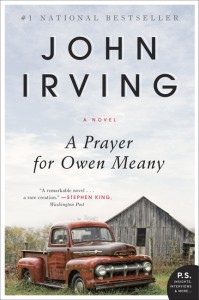 A Prayer for Owen Meany by John Irving (1989). Set in a vividly drawn New Hampshire town in the 1950s and 1960s, this novel’s title character is a tiny boy with a “wrecked voice” and no talent for baseball. In fact, the only ball he hits kills the mother of his best friend, narrator Johnny Wheelwright. Owen’s disabilities make him the butt of jokes, yet he believes he is an “instrument of God.” Familiar Irving hijinks and humor abound in this story, which delivers a stirring meditation on history, hypocrisy, social justice, and faith.
A Prayer for Owen Meany by John Irving (1989). Set in a vividly drawn New Hampshire town in the 1950s and 1960s, this novel’s title character is a tiny boy with a “wrecked voice” and no talent for baseball. In fact, the only ball he hits kills the mother of his best friend, narrator Johnny Wheelwright. Owen’s disabilities make him the butt of jokes, yet he believes he is an “instrument of God.” Familiar Irving hijinks and humor abound in this story, which delivers a stirring meditation on history, hypocrisy, social justice, and faith.
Total Points: 3 (JW 3)
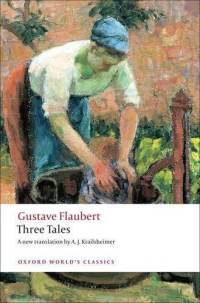 A Simple Heart by Gustave Flaubert (1877). Included in the volume Three Tales, this is the story of Félicité, an uneducated and loyal servant who never questions her lot in life. She is sustained by her unquestioning faith and her great love for her nephew and for her mistress’s daughter Virginie. When she loses them both, she finds an unlikely recipient for her ardent affections—a parrot named Lulu.
A Simple Heart by Gustave Flaubert (1877). Included in the volume Three Tales, this is the story of Félicité, an uneducated and loyal servant who never questions her lot in life. She is sustained by her unquestioning faith and her great love for her nephew and for her mistress’s daughter Virginie. When she loses them both, she finds an unlikely recipient for her ardent affections—a parrot named Lulu.
Total Points: 3 (ML 3)
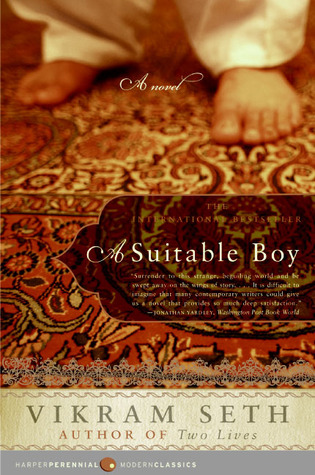 A Suitable Boy by Vikram Seth (1993). This novel is, at its core, a love story: Lata and her mother, Mrs. Rupa Mehra, are both trying to find—through love or through exacting maternal appraisal—a suitable boy for Lata to marry. Set in the early 1950s, in an India newly independent and struggling through a time of crisis,the book takes us into the richly imagined world of four large extended families. A sweeping panoramic portrait of a complex, multiethnic society in flux, the novel remains the story of ordinary people caught up in a web of love and ambition, humor and sadness, prejudice and reconciliation, the most delicate social etiquette and the most appalling violence.
A Suitable Boy by Vikram Seth (1993). This novel is, at its core, a love story: Lata and her mother, Mrs. Rupa Mehra, are both trying to find—through love or through exacting maternal appraisal—a suitable boy for Lata to marry. Set in the early 1950s, in an India newly independent and struggling through a time of crisis,the book takes us into the richly imagined world of four large extended families. A sweeping panoramic portrait of a complex, multiethnic society in flux, the novel remains the story of ordinary people caught up in a web of love and ambition, humor and sadness, prejudice and reconciliation, the most delicate social etiquette and the most appalling violence.
Total Points: 3 (MMCPH 3)
 Ahab’s Wife by Sena Jeter Naslund (1999). “Captain Ahab was neither my first husband nor my last” reads the opening line of this novel, which imagines the life of the woman married to the obsessive captain from Moby-Dick. And what a life it was—running away from home, posing as a boy to get aboard a whaling ship, tragedy at sea, cannibalism, and then domestic life in New Bedford, Massachusetts. Naslund captures all in rich detail as she deepens her portrait of this lively, intellectually and spiritually curious heroine.
Ahab’s Wife by Sena Jeter Naslund (1999). “Captain Ahab was neither my first husband nor my last” reads the opening line of this novel, which imagines the life of the woman married to the obsessive captain from Moby-Dick. And what a life it was—running away from home, posing as a boy to get aboard a whaling ship, tragedy at sea, cannibalism, and then domestic life in New Bedford, Massachusetts. Naslund captures all in rich detail as she deepens her portrait of this lively, intellectually and spiritually curious heroine.
Total Points: 3 (SV 3)
 Ahab’s Wife by Sena Jeter Naslund (1999). “Captain Ahab was neither my first husband nor my last” reads the opening line of this novel, which imagines the life of the woman married to the obsessive captain from Moby-Dick. And what a life it was—running away from home, posing as a boy to get aboard a whaling ship, tragedy at sea, cannibalism, and then domestic life in New Bedford, Massachusetts. Naslund captures all in rich detail as she deepens her portrait of this lively, intellectually and spiritually curious heroine.
Ahab’s Wife by Sena Jeter Naslund (1999). “Captain Ahab was neither my first husband nor my last” reads the opening line of this novel, which imagines the life of the woman married to the obsessive captain from Moby-Dick. And what a life it was—running away from home, posing as a boy to get aboard a whaling ship, tragedy at sea, cannibalism, and then domestic life in New Bedford, Massachusetts. Naslund captures all in rich detail as she deepens her portrait of this lively, intellectually and spiritually curious heroine.
Total Points: 3 (SV 3)
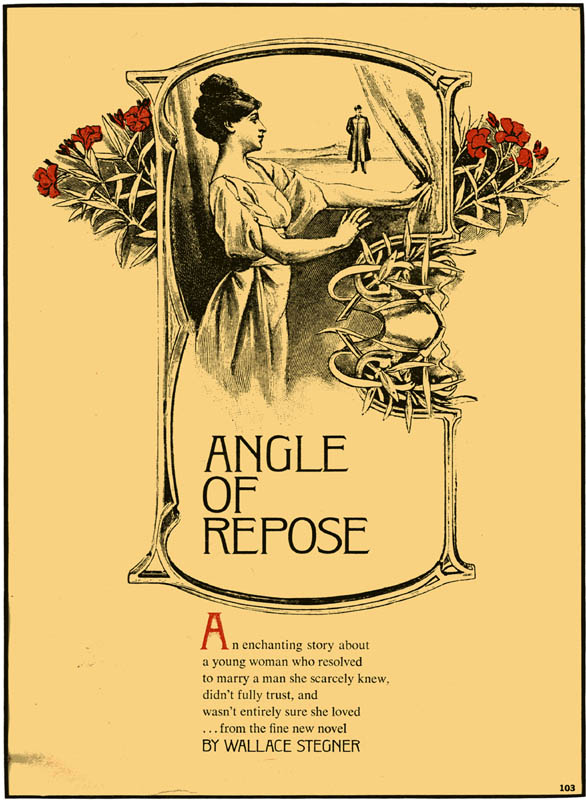 Angle of Repose by Wallace Stegner (1971). “It’s perfectly clear that if every writer is born to write one story, that’s my story,” Stegner said of this Pulitzer Prize–winning novel. The narrator is a divorced, wheelchair-bound professor recalling the life of his pioneer grandparents. He was crude and adventurous, she sophisticated and self-possessed. Together they crossed the country during the nineteenth century; the vivid landscape becomes a character in this story of marriage, American mythology, and the flow of time and memory.
Angle of Repose by Wallace Stegner (1971). “It’s perfectly clear that if every writer is born to write one story, that’s my story,” Stegner said of this Pulitzer Prize–winning novel. The narrator is a divorced, wheelchair-bound professor recalling the life of his pioneer grandparents. He was crude and adventurous, she sophisticated and self-possessed. Together they crossed the country during the nineteenth century; the vivid landscape becomes a character in this story of marriage, American mythology, and the flow of time and memory.
Total Points: 3 (PE 3)
 Angle of Repose by Wallace Stegner (1971). “It’s perfectly clear that if every writer is born to write one story, that’s my story,” Stegner said of this Pulitzer Prize–winning novel. The narrator is a divorced, wheelchair-bound professor recalling the life of his pioneer grandparents. He was crude and adventurous, she sophisticated and self-possessed. Together they crossed the country during the nineteenth century; the vivid landscape becomes a character in this story of marriage, American mythology, and the flow of time and memory.
Angle of Repose by Wallace Stegner (1971). “It’s perfectly clear that if every writer is born to write one story, that’s my story,” Stegner said of this Pulitzer Prize–winning novel. The narrator is a divorced, wheelchair-bound professor recalling the life of his pioneer grandparents. He was crude and adventurous, she sophisticated and self-possessed. Together they crossed the country during the nineteenth century; the vivid landscape becomes a character in this story of marriage, American mythology, and the flow of time and memory.
Total Points: 3 (PE 3)
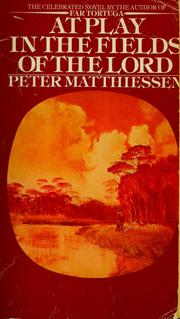 At Play in the Fields of the Lord by Peter Matthiessen (1965). Two Americans try to expand white culture in the jungles of Peru: a Christian missionary hopes to “civilize” the local tribes, and a mercenary plans to remove the locals through terror. In alternating chapters, Mathiessen chronicles their exploits, motives, and changing sense of self (the mercenary eventually goes native, with deadly results) in this complex story of good and evil and missionary zeal, of the quest for personal identity, and of the danger of imposing one culture on another.
At Play in the Fields of the Lord by Peter Matthiessen (1965). Two Americans try to expand white culture in the jungles of Peru: a Christian missionary hopes to “civilize” the local tribes, and a mercenary plans to remove the locals through terror. In alternating chapters, Mathiessen chronicles their exploits, motives, and changing sense of self (the mercenary eventually goes native, with deadly results) in this complex story of good and evil and missionary zeal, of the quest for personal identity, and of the danger of imposing one culture on another.
Total Points: 3 (EC 3)
 Berlin Alexanderplatz by Alfred Döblin (1929). Credited as the first German novel to adopt the technique of James Joyce, this novel tells the story of Franz Biberkopf, who, on being released from prison, is confronted with the poverty, unemployment, crime and burgeoning Nazism of 1920s Germany. As Franz struggles to survive in this world, fate teases him with a little pleasure before cruelly turning on him.
Berlin Alexanderplatz by Alfred Döblin (1929). Credited as the first German novel to adopt the technique of James Joyce, this novel tells the story of Franz Biberkopf, who, on being released from prison, is confronted with the poverty, unemployment, crime and burgeoning Nazism of 1920s Germany. As Franz struggles to survive in this world, fate teases him with a little pleasure before cruelly turning on him.
Total Points: 3 (SY 3)
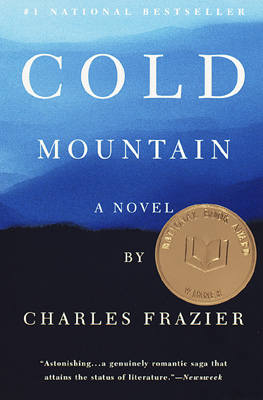 Cold Mountain by Charles Frazier (1997). Frazier won the National Book Award for Fiction for his first novel, set in North Carolina during the Civil War. In rich language that evokes his nineteenth-century landscape, Frazier tells two interconnected stories exploring the themes of love and war and the natural world. The first concerns the Con federate soldier Inman who, like Odysseus, endures a series of deadly obstacles as he crosses the state to return to his home and the woman he loves. The second story centers on that woman, Ada, a pampered Southern belle who, with the help of the mountain woman Ruby, learns to fend for herself in a war ravaged landscape.
Cold Mountain by Charles Frazier (1997). Frazier won the National Book Award for Fiction for his first novel, set in North Carolina during the Civil War. In rich language that evokes his nineteenth-century landscape, Frazier tells two interconnected stories exploring the themes of love and war and the natural world. The first concerns the Con federate soldier Inman who, like Odysseus, endures a series of deadly obstacles as he crosses the state to return to his home and the woman he loves. The second story centers on that woman, Ada, a pampered Southern belle who, with the help of the mountain woman Ruby, learns to fend for herself in a war ravaged landscape.
Total Points: 3 (ES 3)
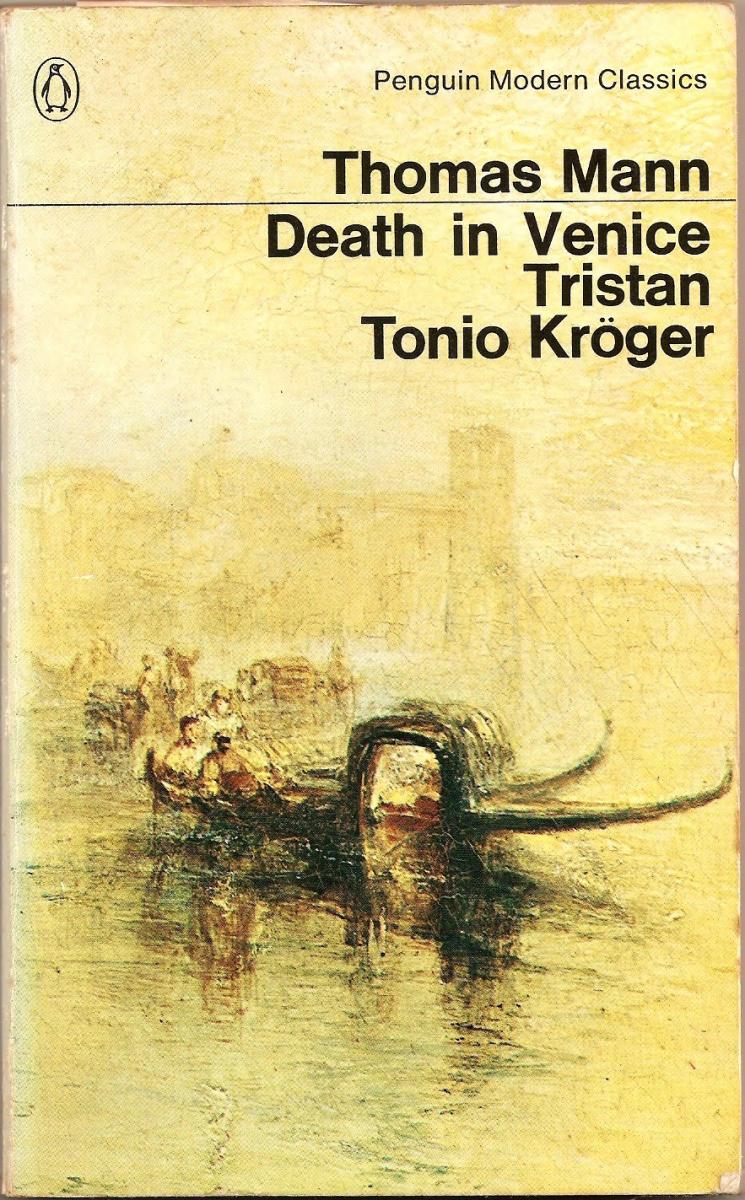 Death in Venice by Thomas Mann (1912). With a skillful use of classical allusion, Mann’s vaguely homoerotic novella describes an aging writer’s platonic infatuation with a beautiful young boy in Venice. Gustav von Aschenbach is a tragic idealist who has dedicated his life to the study and pursuit of high art and beauty. In young Tadzio he recognizes both the embodiment and inevitable transience of perfection in this story of heartrending poignancy.
Death in Venice by Thomas Mann (1912). With a skillful use of classical allusion, Mann’s vaguely homoerotic novella describes an aging writer’s platonic infatuation with a beautiful young boy in Venice. Gustav von Aschenbach is a tragic idealist who has dedicated his life to the study and pursuit of high art and beauty. In young Tadzio he recognizes both the embodiment and inevitable transience of perfection in this story of heartrending poignancy.
Total Points: 3 (PM 3)
 Decline and Fall by Evelyn Waugh (1928). This hilarious send-up of the English code of honor begins with Paul Pennyfeather’s “sending down” (expulsion) from Oxford. Reduced to teaching at a fourth-rate school, he encounters wonderfully named characters, including Lady Circumference and Lord Tangent, who prove ripe for satire. Pennyfeather also finds love with the impossibly rich and lovely Margot Beste-Chetwynde. But l’amour leads to a spell in the clink. Fortunately, Waugh says, “any one who has been to an English public school will always feel comparatively at home” in jail.
Decline and Fall by Evelyn Waugh (1928). This hilarious send-up of the English code of honor begins with Paul Pennyfeather’s “sending down” (expulsion) from Oxford. Reduced to teaching at a fourth-rate school, he encounters wonderfully named characters, including Lady Circumference and Lord Tangent, who prove ripe for satire. Pennyfeather also finds love with the impossibly rich and lovely Margot Beste-Chetwynde. But l’amour leads to a spell in the clink. Fortunately, Waugh says, “any one who has been to an English public school will always feel comparatively at home” in jail.
Total Points: 3 (DC 3)
 Dirty Snow by Georges Simenon (1950). As this darkest of noirs opens, nineteen-year-old Frank Friedmaier, already a pimp, thug, and petty thief, has just become a murderer. What follows are searing portraits of the cruel and alienated young man who sees violence as a form of self-definition and the corrupt grim world that made him.
Dirty Snow by Georges Simenon (1950). As this darkest of noirs opens, nineteen-year-old Frank Friedmaier, already a pimp, thug, and petty thief, has just become a murderer. What follows are searing portraits of the cruel and alienated young man who sees violence as a form of self-definition and the corrupt grim world that made him.
Total Points: 3 (JB 3)
 Eleven Kinds of Loneliness by Richard Yates (1962). Yates’s debut collection set the tone for what his career would bring: quiet, well-crafted stories and novels about people whose dearest hopes were thwarted, often by their own inability to realize them. Unrelentingly realistic in setting and subject matter, Yates repudiates any easy redemption in these stories. Like Walter Henderson, protagonist of the aptly titled “Glutton for Punishment,” these are men and women who slowly, bitterly, come to understand that their one true talent is for defeat.
Eleven Kinds of Loneliness by Richard Yates (1962). Yates’s debut collection set the tone for what his career would bring: quiet, well-crafted stories and novels about people whose dearest hopes were thwarted, often by their own inability to realize them. Unrelentingly realistic in setting and subject matter, Yates repudiates any easy redemption in these stories. Like Walter Henderson, protagonist of the aptly titled “Glutton for Punishment,” these are men and women who slowly, bitterly, come to understand that their one true talent is for defeat.
Total Points: 3 (AGold 3)
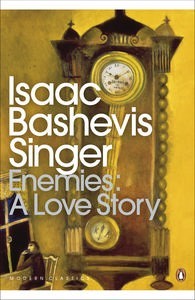 Enemies, A Love Story by Isaac Bashevis Singer (1972). Herman Broder, who survived World War II by hiding in a hayloft for three years, marries the woman who hid him, and he now lives a life of duplicity in 1949 Brooklyn—having an affair, pretending to be a traveling book salesman while really ghostwriting for a rabbi. To top it off, his first wife—a concentration camp survivor who Broder thought was dead—shows up. Enemies is a classic Holocaust survivor tale, filled with guilt, paranoia, a little humor, and raw desperation.
Enemies, A Love Story by Isaac Bashevis Singer (1972). Herman Broder, who survived World War II by hiding in a hayloft for three years, marries the woman who hid him, and he now lives a life of duplicity in 1949 Brooklyn—having an affair, pretending to be a traveling book salesman while really ghostwriting for a rabbi. To top it off, his first wife—a concentration camp survivor who Broder thought was dead—shows up. Enemies is a classic Holocaust survivor tale, filled with guilt, paranoia, a little humor, and raw desperation.
Total Points: 3 (SS 3)
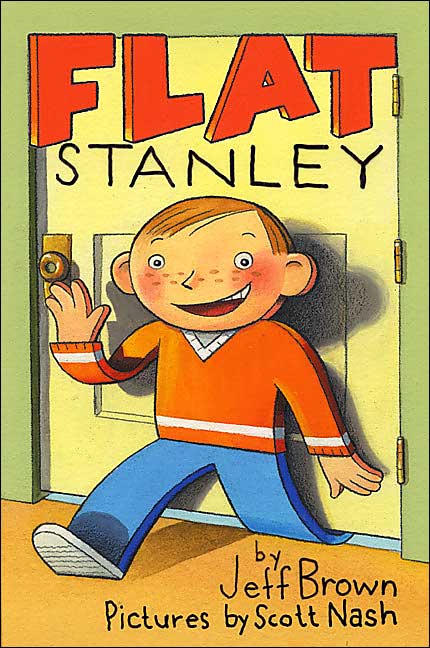 Flat Stanley by Jeff Brown (1964). If Kafka had watched a lot of children’s cartoons, this is the book he might have written. Young Stanley Lambchop wakes up one morning flat as a pancake, another victim of a falling bulletin board. He enjoys his flatness at first—sliding into envelopes, slipping through metal grates, foiling a gang of art thieves—but then others begin to mock him. The book’s imagination and deadpan humor is enhanced by Tomi Ungerer’s charming and very 1960s-looking illustrations.
Flat Stanley by Jeff Brown (1964). If Kafka had watched a lot of children’s cartoons, this is the book he might have written. Young Stanley Lambchop wakes up one morning flat as a pancake, another victim of a falling bulletin board. He enjoys his flatness at first—sliding into envelopes, slipping through metal grates, foiling a gang of art thieves—but then others begin to mock him. The book’s imagination and deadpan humor is enhanced by Tomi Ungerer’s charming and very 1960s-looking illustrations.
Total Points: 3 (AMH 3)
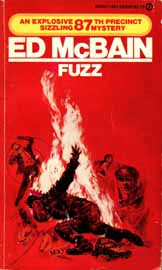 Fuzz by Ed McBain (1968). Fueled by clever plots, sharp dialogue, and vivid characters, McBain’s series of novels set in New York City’s 87th Precinct is a gold standard of the police procedural. This novel features one of the genre’s great villains, the murderous Deaf Man, who taunts and ridicules his blue-clad adversaries.
Fuzz by Ed McBain (1968). Fueled by clever plots, sharp dialogue, and vivid characters, McBain’s series of novels set in New York City’s 87th Precinct is a gold standard of the police procedural. This novel features one of the genre’s great villains, the murderous Deaf Man, who taunts and ridicules his blue-clad adversaries.
Total Points: 3 (DFW 3)
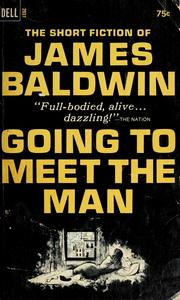 Going to Meet the Man by James Baldwin (1965). Baldwin is best known for his political and autobiographical essays, but these eight short stories showcase his ability to capture the disparate manifestations of race in America. He vividly depicts an impotent white southerner who can only get aroused by thinking of racial violence and an African American man married to a Swedish woman. Baldwin also revisits his tried and true stomping ground of family violence in Depression-era Harlem.
Going to Meet the Man by James Baldwin (1965). Baldwin is best known for his political and autobiographical essays, but these eight short stories showcase his ability to capture the disparate manifestations of race in America. He vividly depicts an impotent white southerner who can only get aroused by thinking of racial violence and an African American man married to a Swedish woman. Baldwin also revisits his tried and true stomping ground of family violence in Depression-era Harlem.
Total Points: 3 (DMcF 3)
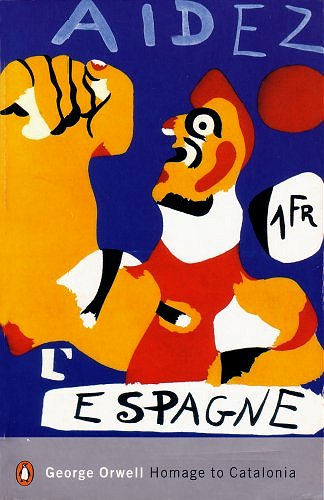 Homage to Catalonia by George Orwell (1940). Orwell’s memoir of going to fight on the republican side in the Spanish Civil War combines early Hemingway’s disabused attitude toward war with Leon Trotsky’s talent for political analysis. Through vivid accounts of battle and political machinations, he defines the true meaning of the term Orwellian: “If you had asked me why I had joined the militia I should have answered: ‘To fight against Fascism,’ and if you had asked me what I was fighting for, I should have answered: ‘Common decency.’”
Homage to Catalonia by George Orwell (1940). Orwell’s memoir of going to fight on the republican side in the Spanish Civil War combines early Hemingway’s disabused attitude toward war with Leon Trotsky’s talent for political analysis. Through vivid accounts of battle and political machinations, he defines the true meaning of the term Orwellian: “If you had asked me why I had joined the militia I should have answered: ‘To fight against Fascism,’ and if you had asked me what I was fighting for, I should have answered: ‘Common decency.’”
Total Points: 3 (AF 3)
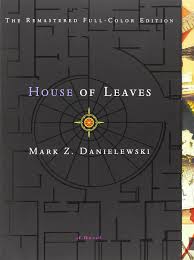 House of Leaves by Mark Z. Danielewski (2000). An experimental novel that plays with form and format – including colored words, vertical footnotes and appendices - House of Leaves novel focuses on a young family that moves into a small home on Ash Tree Lane where they discover something is terribly wrong: their house is bigger on the inside than it is on the outside. Of course, neither Pulitzer Prize-winning photojournalist Will Navidson nor his companion Karen Green was prepared to face the consequences of that impossibility, until the day their two little children wandered off and their voices eerily began to return another story -- of creature darkness, of an ever-growing abyss behind a closet door, and of that unholy growl which soon enough would tear through their walls and consume all their dreams.
House of Leaves by Mark Z. Danielewski (2000). An experimental novel that plays with form and format – including colored words, vertical footnotes and appendices - House of Leaves novel focuses on a young family that moves into a small home on Ash Tree Lane where they discover something is terribly wrong: their house is bigger on the inside than it is on the outside. Of course, neither Pulitzer Prize-winning photojournalist Will Navidson nor his companion Karen Green was prepared to face the consequences of that impossibility, until the day their two little children wandered off and their voices eerily began to return another story -- of creature darkness, of an ever-growing abyss behind a closet door, and of that unholy growl which soon enough would tear through their walls and consume all their dreams.
Total Points: 3 (TLeClair 3)
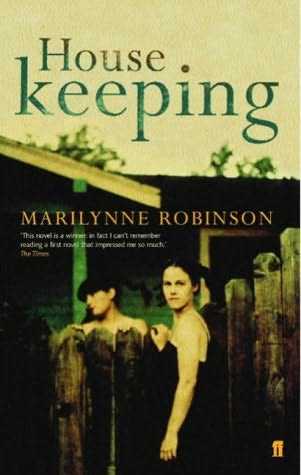 Housekeeping by Marilynne Robinson (1980). This is the story of Ruth and her younger sister, Lucille, who grow up haphazardly, first under the care of their competent grandmother, then of two comically bumbling great-aunts, and finally of Sylvie, their eccentric and remote aunt. The family house is in the small Far West town of Fingerbone set on a glacial lake, the same lake where their grandfather died in a spectacular train wreck, and their mother drove off a cliff to her death. It is a town "chastened by an outsized landscape and extravagant weather, and chastened again by an awareness that the whole of human history had occurred elsewhere." Ruth and Lucille's struggle toward adulthood illuminates the price of loss and survival, and the dangerous and deep undertow of transience.
Housekeeping by Marilynne Robinson (1980). This is the story of Ruth and her younger sister, Lucille, who grow up haphazardly, first under the care of their competent grandmother, then of two comically bumbling great-aunts, and finally of Sylvie, their eccentric and remote aunt. The family house is in the small Far West town of Fingerbone set on a glacial lake, the same lake where their grandfather died in a spectacular train wreck, and their mother drove off a cliff to her death. It is a town "chastened by an outsized landscape and extravagant weather, and chastened again by an awareness that the whole of human history had occurred elsewhere." Ruth and Lucille's struggle toward adulthood illuminates the price of loss and survival, and the dangerous and deep undertow of transience.
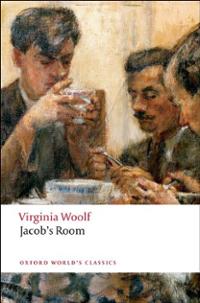 Jacob’s Room by Virginia Woolf (1922). Woolf’s first novel to depart from a linear, traditional style follows Jacob Flanders as he goes through Cambridge, carries on love affairs in London, and travels in Greece. Sitting with a girlfriend, he thinks, “It’s not catastrophes, murders, deaths, diseases, that age and kill us, it’s the way people look and laugh, and run up the steps of omnibuses.” Ultimately, it is catastrophe that kills Jacob, as Woolf suggests war’s devastations through this novel’s final description of Jacob’s empty room.
Jacob’s Room by Virginia Woolf (1922). Woolf’s first novel to depart from a linear, traditional style follows Jacob Flanders as he goes through Cambridge, carries on love affairs in London, and travels in Greece. Sitting with a girlfriend, he thinks, “It’s not catastrophes, murders, deaths, diseases, that age and kill us, it’s the way people look and laugh, and run up the steps of omnibuses.” Ultimately, it is catastrophe that kills Jacob, as Woolf suggests war’s devastations through this novel’s final description of Jacob’s empty room.
Total Points: 3 (TM 3)